In 2021/22, the Newcastle Jets will return to the Gold in a statement that the Club is committed to reconnecting with our origins and upholding the history of football in the region.
As part of that focus, this season’s jersey will also feature the number ‘1884’ boldly on the back – the year in which the first football club in Northern NSW was founded.
In our ‘1884’ series, local award-winning football author, and University of Newcastle Emeritus Professor, John Maynard, travels through the history of football in our region, highlighting some of the heroes that put us on the world map, and ultimately, exploring the historic foundations that have allowed the Jets to flourish.
This edition highlights two local legends who featured in our first World Cup Socceroos squad and elsewhere on the world stage.
More: What ‘1884’ means to football in Northern NSW

RAY BAARTZ
A real talent of the Newcastle region and one of Australia’s greatest ever players whose career was tragically cut short at the height of his power at the age of just twenty-seven.
Born at Merewether he came through the Newcastle junior ranks. He first burst upon the scene with some outstanding displays as a member of the Northern NSW under 18 team in the Australian youth championships.
He broke through to the Adamstown Rosebuds senior team and his talent was such that the Rosebuds sent him and another young Adamstown player Doug Johns on a football scholarship to Manchester United. Adamstown through connections and years ahead of their time had inaugurated a scheme of funding and sending quality young players over to United. Baartz excelled in the opportunity and after just six months would be offered a contract and would spend two years with the ‘Red Devils’.

Baartz and Johns headed to Manchester and Old Trafford in 1964. The time spent at United was a fantastic experience. Doug Johns would reflect that ‘the club had players for four teams who did nothing but train and play football.’
The Adamstown boys were training under the supervision of club coach Johnny Aston. Baartz had been shifted from his normal midfield position to striker. Johns would only stay for six months and said, ‘that he had played with the lower grade side, but Ray had played some reserve grade matches and was doing very well.’ In early 1965 news came through that Ray Baartz had been signed by Manchester United as a fulltime professional.
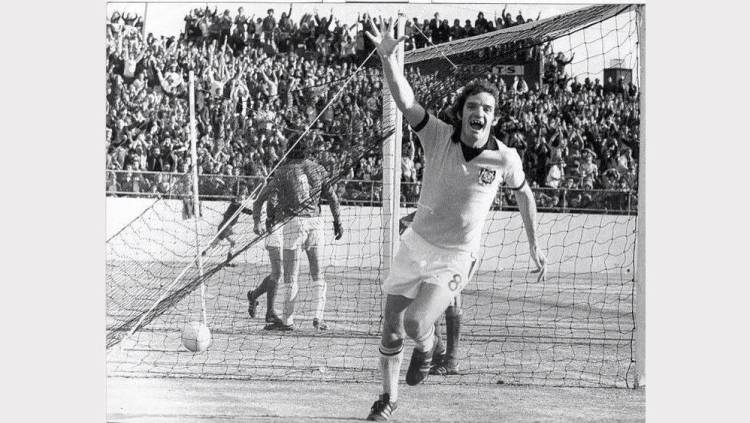
A statement from United said Baartz was the only new name in their roster of 32 professionals with the club. It was said that Baartz was a hit with the Manchester United officials. He was the centre forward for United reserves and at just eighteen looked to have a great future in front of him. The news of Baartz signing with the ‘Red Devils’ had a mixed impact upon Adamstown Rosebuds: ‘We had hoped to have Ray home for this season. But it is a great thing not only for us but also for Australia soccer.’ Sadly, homesickness impacted upon Baartz, and he came home to Newcastle, and we are left today with the feeling of what might have been had he stayed.
He returned to Adamstown and was transferred to Hakoah in 1966 for an Australian record at the time of $5600. He possessed a left foot shot that was regarded by many as the most powerful in the country. He had speed, acceleration, vision, balance, and control. Many considered him the complete player. He was equally effective in midfield or attack. He was a member of the Australian team that went agonisingly close to qualifying for the 1970 World Cup Finals in Mexico. After being forced by FIFA into an exhausting round the world qualifying series where they played in South Korea, Mozambique, and Israel they fell at the final hurdle and eliminated by Israel.
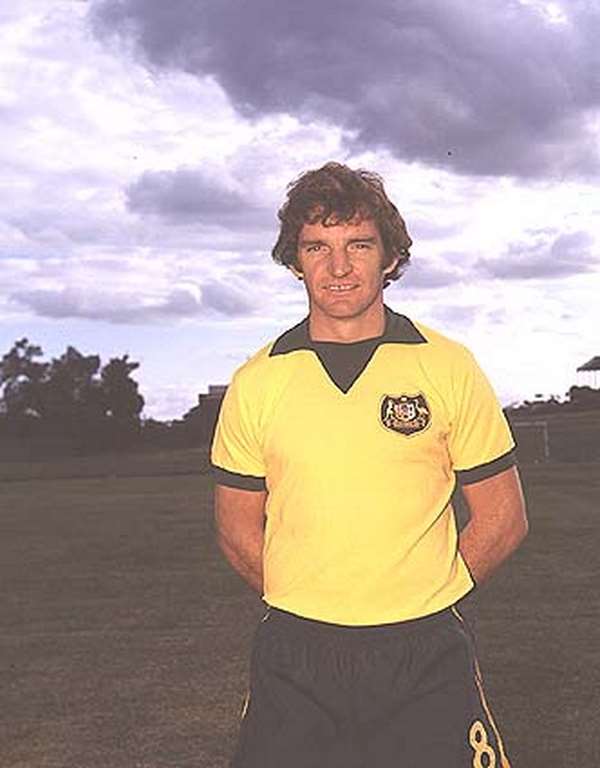
Ray was a part of the great 1974 team that qualified for the 1974 World Cup finals in Germany. The Socceroos had overcome New Zealand, Iraq, Indonesia, Iran, and South Korea.
Sadly, Ray Baartz would miss out on playing in the finals as in a lead up game against Uruguay in Sydney he was brutally karate chopped in the neck and would be later paralysed for a time. It would end his magnificent career. In that game Baartz was sensational and had scored the opening goal with a blistering 35 metre drive.
Rale Rasic said: ‘After Baartz scored the first goal he was a marked man. The Uruguayans could not handle him and the only way they knew how to stop him was to get him out of the game any way they could. They did it in the most despicable way imaginable. There was a bit of a set-to 15 minutes after the goal and in the melee, Ray was felled by what I still describe as a karate chop to the back of the neck by Garisto. Garisto was sent off, but it was small punishment for a bastard of an act.’
Rale Rasic later said that he regarded ‘Baartz as the greatest footballer I have ever dealt with. He is a wonderful character and revered by all the ’74 Socceroos. He has never had an enemy and he is the pride of Newcastle. Ray was so important to the ’74 Socceroos. He was to us what Franz Beckenbauer was to West Germany, What Johan Cruyff was to Holland what Pele was to Brazil and Maradona to Argentina. All our tactical game was built around him due to his amazing mobility and shooting power. He never played as an out-and-out striker but would come from behind and produce world class goals.’

Rasic would select Baartz in his greatest ever Australian team and declared: ‘in my opinion, he is the greatest player Australia has produced. Throw them all in – Kewell, Viduka, Reg Date, Joe Marston. None of them match up to him… Ray had everything as a player from skill to fantastic temperament to an explosive shot with both feet, to powerful heading. He played the most remarkable one touch football. I have never seen a more complete player. I have no doubts that had Ray not been cut down by that vicious karate chop to the neck against Uruguay before the 1974 World Cup finals, we would have fared much, much better than walking away with a single point… he was the team.’
Ray Baartz played for Australia on 48 occasions and scored 18 goals. He was inducted into the Australian Sport Hall of Fame in 1985. In 2000 he was awarded the Australian Sports Medal for services to soccer and in 2012 was named as a member of the greatest ever Australian team. He played 236 games for Hakoah and scored 211 goals.
COLIN ‘BUNNY’ CURRAN
I was one of a group of young Adamstown kids who used to idolise ‘Bunny’ Curran. It was not just that he was a great player, but he was so kind and encouraging with his time.
Between 1967 and 1969 five of us kids (I was eleven in 1967) used to attend Adamstown Rosebuds training sessions on Tuesday and Thursday nights and twenty-year-old ‘Bunny’ took us under his wing and used to put us through our own inspiring special training sessions before he trained with the team. He was a real idol.
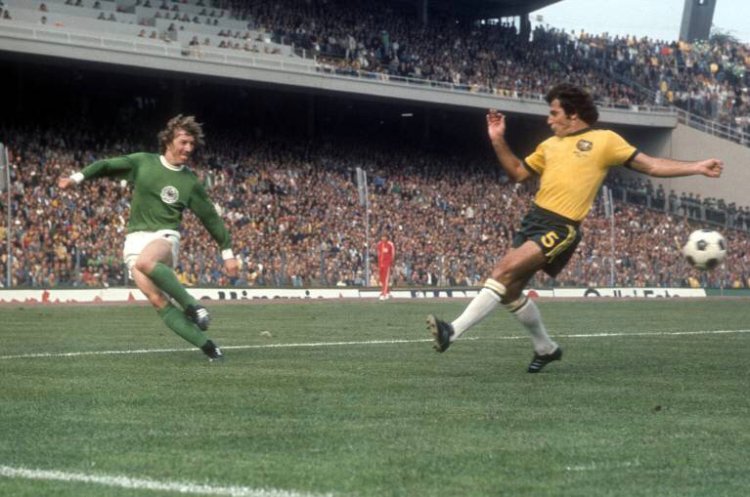
During the lead up to the exciting Australian qualification for the 1974 World Cup finals in West Germany legendary Australian coach Rale Rasic had no hesitation in labelling Curran as ‘the best footballer in the country’.
Col along with Adamstown players Ray Baartz and Doug Johns spent time with Manchester United in 1964/65. Unlike Baartz and Johns who were sponsored by Adamstown, Curran paid his own way to Britain by ship.
Curran’s chance for a Rosebuds sponsored scholarship had unexpectedly fell through but he was determined to join his friend Ray Baartz. He went over for a one-year trial organised by his friend Baartz who was already making an impact in Manchester. It was six-week voyage on the ship and Curran would later say he was so bored he nearly jumped overboard.

Baartz picked up Curran at Liverpool station and took him to Old Trafford for a look. Curran was glowing in his memories of the Manchester experience: ‘I was welcomed by manager Matt Busby and before I knew it, I was training with the likes of Bobby Charlton, George Best, Denis Law and Pat Crerand.’ He like many others was awe struck by the young talented Irish player Georgie Best who had burst through into United’s senior team.
Curran moved in with Baartz in Manchester. During the spell he played alongside some of the great young talent that included Francis Burns, John Aston Jnr, Brian Kidd, John Fitzpatrick, and David Sadler.
He said; ‘One day the manager invited me into his office and told me the club was happy with my progress and he offered me a one-year contract. I was over the moon.’

But when he informed Ray Baartz of his news, he was shocked to learn that Baartz was returning home to Australia. Curran faced the reality of moving into digs on his own with people he did not know. Curran sixteen at the time also had to consider that his mother was not well at the time, and he decided to come home and re-join Adamstown.
He reflected on that decision in 2019; ‘I regard that decision as my biggest regret. I have kicked myself for all these years for not staying because I could have had a proper football life in England but on the other hand, I did not do too badly here either.’
Curran had come through the West Wallsend juniors and would make his initial break through as a senior player with Maitland before moving to Adamstown Rosebuds. He won two premierships with the Rosebuds in 1966 and 1968.
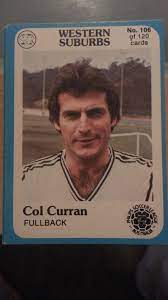
He represented Northern NSW on many occasions including games against AS Roma, Manchester United, Manchester City, Romania B and Slovan Bratislava. He broke through to the Australian team for their 1970 world tour across Asia, Middle East, Europe, and Mexico.
It was this tour that laid the foundations for Australia’s appearance at the 1974 world cup finals in Germany. On his return to Australia, he was bought by the Sydney club Marconi for $7000 but he developed a hernia which needed an operation and required a long lay-off. He returned to Newcastle to recuperate and eventually re-joined Adamstown. He then moved to Western Suburbs back in Sydney.

In 1977 he was approached to come back home to Newcastle and join the new Newcastle club in the Phillips National Soccer League Newcastle KB United. He would be one of KB’s outstanding players through to 1981.
After the heroics of 1974 world cup qualification Curran very nearly missed the finals when he was badly injured in a lead up game on the way to Germany against Indonesia. Curran pushed himself round the clock working on the injured leg and was cleared to run onto the field against East Germany in the opening appearance of the Socceroos in the finals.
He holds the unwanted distinction of scoring Australia’s first goal at the finals when he scored an own goal in the 2-0 loss to the East Germany. He suffered some recurring injuries following the 1974 world cup but was recalled into the team in the latter stages of the unsuccessful 1978 world cup qualification series.
He played thirty-five games for Australia that included twenty-two full internationals scoring one goal. In 1999 he was inducted into the Football Federation Australia Hall of Fame.
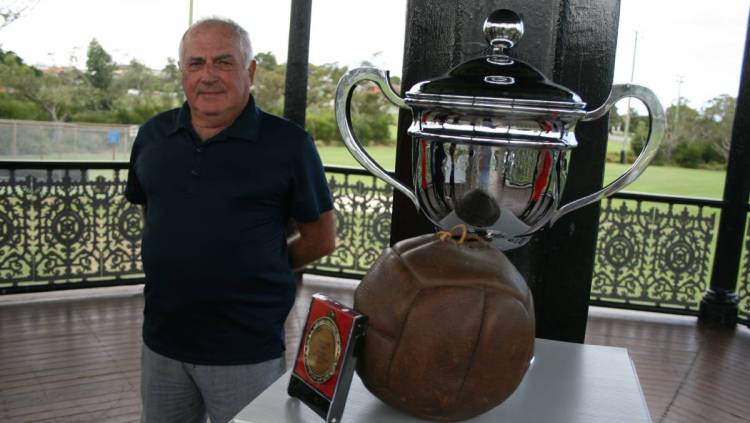
JIMMY CURRAN
It is not often that one finds champion playing ability jumping a generation. There are many great players following the deeds of their fathers on to the football field.
But to have a grandson following the deeds of a grandfather with sporting exploits is rarer. That is very much the case with Col Curran as his grandfather James Curran was a pioneer and real star of the game in the north in its early days.
The deeds of Jimmy Curran have been recorded in history and it is little wonder that Col became the player he did as it was clearly in his genes.
In April 1886 Jimmy Curran was the right winger for the famous Minmi Rangers and he was the scorer of one of the goals that defeated the strong Sydney team Granville 3-2 in a pre-season match at Minmi. During the 1886 season Minmi defeated their archrival Hamilton Athletic 3-1 with Jimmy Curran scoring two of the goals. Shortly after the two sides met again in the State Cup knock out before a large crowd of over 2000 at Hamilton.
The hard-fought game was locked at 1-1 with only four minutes left when Jimmy Curran with a fine run cut through three defenders to score the winning goal. In 1888 Jimmy Curran was a member of the Newcastle representative team that played against Victoria at the Newcastle Cricket Ground at Cooks Hill. Victoria won the game 2-1 but Jimmy Curran scored the Newcastle goal.
The same year he was a member of the Minmi team that beat Burwood United (a team from the Junction) in the final of the Ellis Cup 3-1 with Jimmy Curran scoring two of the goals.
In the 1890 premiership final Minmi downed Burwood United 1-0 and it was again Curran that scored the all-important goal. He was a member of the all-conquering Minmi Rangers team in 1892 that won the premiership, Ellis Cup and Gardiner Cup. Sadly, he had to miss the Gardiner Cup final win through an injury.
In 1894 he was a member of the Newcastle representative team that beat Sydney at Hamilton 5-0 and Jimmy Curran had scored three of the goals. That was noted as the first time a northern representative player had scored a hat-trick in a representative fixture.
In 1896, he transferred to West Wallsend and played alongside ‘Doughy’ Maunder, father of the future internationals ‘Podge’ and Henry. Jimmy Curran and West Wallsend played in three successive Gardiner Cup Finals between 1900-1902 winning the first two.
Jimmy Curran was still a force to be reckoned with when he finally hung up his boots in 1903. What a pair of footballing greats Col and Jimmy Curran two great stars of this regions proud long soccer history.
More: What ‘1884’ means to football in Northern NSW






